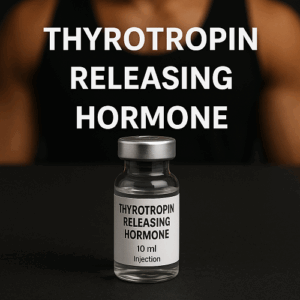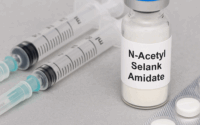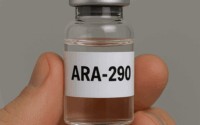Thyrotropin Releasing Hormone
 🧠 Thyrotropin Releasing Hormone (TRH): The Master Metabolic Messenger
🧠 Thyrotropin Releasing Hormone (TRH): The Master Metabolic Messenger
🔍 Introduction: What Is TRH and Where It Comes From
Thyrotropin Releasing Hormone (TRH) is a tiny tripeptide (pyroglutamyl-histidyl-proline amide) synthesized in the paraventricular nucleus of the hypothalamus. It serves as the key “top-level” hormone in the hypothalamic‑pituitary‑thyroid (HPT) axis, triggering the release of thyroid stimulating hormone (TSH) and indirectly regulating thyroid hormone levels throughout the body.
🧩 How TRH Works: Mechanism & Physiological Action
-
Hypothalamic release: TRH neurons sense low thyroid hormone (T3/T4) feedback and secrete TRH into the portal blood system.
-
Pituitary stimulation: TRH binds to TRH receptors (G‑protein coupled) on thyrotrophs, raising intracellular calcium and activating TSH release .
-
Thyroid activation: Released TSH stimulates thyroid glands to produce T4 and T3, increasing metabolic rate and energy utilization.
-
Negative feedback: Elevated T3 and T4 levels suppress further TRH and TSH to maintain hormonal balance.
🌟 Beyond Thyroid Control: Additional Roles of TRH
🧠 Cognitive & Neuromodulatory Effects
TRH isn’t limited to endocrine function. It acts as a neurotransmitter throughout the CNS, influencing wakefulness, mood, and appetite by modulating brainstem and hypothalamic activity.
📈 Prolactin and Growth Hormone Stimulation
TRH also induces prolactin release from the lactotroph cells in the pituitary. At higher doses or under certain conditions, it can enhance growth hormone (GH) and adrenocorticotropic hormone (ACTH) in select patient groups (e.g., acromegaly or hypothyroid states).
✅ Clinical Uses & Benefits
🩺 Thyroid Function Testing
TRH (as synthetic protirelin) was historically used to perform TRH stimulation tests, distinguishing secondary (pituitary) from tertiary (hypothalamic) hypothyroidism. While less common today, it remains useful in complex diagnostic cases.
🧠 Neurological Research Applications
TRH analogs like taltirelin show neuroprotective, cognitive-enhancement, and movement disorder benefits in experimental models, with longer half-life and minimal tolerance development.
⚠️ Side Effects and Safety Notes
TRH administration is generally well tolerated in clinical settings. Reported adverse effects may include:
-
Mild nausea, flushing, shivering
-
Transient blood pressure fluctuations (rise or drop)
-
Urinary urgency or sweating in some individuals
Use is contraindicated in patients with pituitary tumors or severe cardiovascular conditions.
📊 Summary Table
| Feature | Details |
|---|---|
| Origin | Hypothalamus (PVN neurons) |
| Molecular Structure | Tripeptide (pyroGlu-His-Pro-NH₂) |
| Primary Action | Stimulates TSH & prolactin release |
| Physiological Roles | Metabolism, mood, GH modulation, thyroid regulation |
| Clinical Use | TRH stimulation test, experimental neurotherapy |
| Main Side Effects | Flushing, BP changes, nausea (rare) |
🧠 Uncommon Insight: Pulsatility Matters
TRH and resulting TSH secretion follow ultradian and circadian rhythms—about 10 pulses per day with peak secretion at midnight. Disruption in these rhythms, such as in non-thyroid illness or chronic stress, can blunt hormonal responses and metabolic function.
🧪 Final Takeaway: TRH at the Crossroads of Hormonal Control
Thyrotropin Releasing Hormone is more than a thyroid trigger—it’s a multi-functional neuroendocrine signal that supports metabolism, cognition, and hormonal harmony. While routine use is rare outside research or diagnostics, understanding TRH’s regulatory role enriches any deep dive into endocrine health and metabolic balance.


